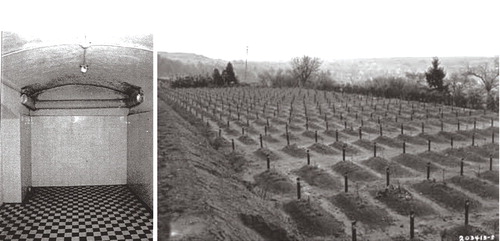Nazi Euthanasia of the Mentally Ill at Hadamar
The Nazi euthanasia program, code-named “Operation-T4,” set out to eliminate “life unworthy of life.” It rapidly expanded to include individuals with mental illness, with Hitler’s 1939 decree allowing physicians to decide that certain individuals “be accorded a mercy-death.” These patients included those with schizophrenia, the criminally insane, and the chronically hospitalized. The euthanasia program became the Nazi regime’s first campaign of mass murder against specific populations whom it considered inferior and threatening to the well-being of the Aryan race and the first time in history where psychiatrists sought out to systematically exterminate their patients, with several prominent psychiatrists playing central roles (1–4).
By 1940, six killing centers designated as euthanasia institutions were established at Brandenburg, Grafeneck, Hartheim, Sonnenstein, Bernburg, and Hadamar. The Hadamar Psychiatric Institute near Wiesbaden, Germany, code-named “Facility-E,” was refashioned for use as a psychiatry euthanasia facility in November 1940. From mid-January 1941 under Dr. Ernst Baumhard’s direction, with a staff of approximately 100, busloads of patients arrived daily at the killing operation. The patients were offloaded, weighed, photographed, and led to the gas chamber disguised as a shower room in the cellar. At least 10,000 mentally ill adults were gassed and cremated at Hadamar in the first 9 months of 1941. In August 1942, after a short break, the facility again functioned as a euthanasia center, using lethal medication doses or starvation. After removal of various organs for medical research, the bodies were buried in mass graves located on the hospital grounds. The killing center remained operational until its liberation by American troops on March 26, 1945 (4).
Operation-T4 claimed approximately 200,000 lives. Psychiatric euthanasia institutions served as training centers for the Schutzstaffel (SS) who used the experience to construct larger killing centers (Auschwitz, Treblinka, etc.). The psychiatrist Dr. Imfried Eberl, Treblinka’s first commandant and the only physician to command a death camp, established the facility following his experience as superintendent of Brandenburg Psychiatry Hospital (2).
Address correspondence and reprint requests to Dr. Strous, Beer Yaakov Mental Health Center, P.O. Box 1, Beer Yaakov 70350, Israel; [email protected] (e-mail).

Gas chamber at Hadamar. Image courtesy of Prosjekt Felles Framtid. Mass burial site at Hadamar. Image courtesy of the U.S. Holocaust Memorial Museum, National Archives and Records Administration.
1. Bachrach S: In the name of public health—Nazi racial hygiene. N Engl J Med 2004; 351:417–420Crossref, Medline, Google Scholar
2. Lifton R: The Nazi Doctors: Medical Killing and the Psychology of Genocide. New York, Basic Books, 1986Google Scholar
3. Proctor RN: Racial Hygiene: Medicine Under the Nazis. Cambridge, Mass, Harvard University Press, 1988Google Scholar
4. Meusch M: Hadamar: a German psychiatric treatment center in WWII. Biomol Eng 2001; 17:65–69Crossref, Medline, Google Scholar



